World premiere of the Dolphin Surf: BYD wants to shake up the ID.2, Renault 5 and co
Small, affordable cars with an electric drive – what many customers have been demanding for a long time is slowly becoming a reality. Although small electric cars have been available for many years, they have generally not been particularly affordable – such as the BMW i3 or Fiat 500 electric, or not really profitable for the manufacturer, as was once the case with the VW e-Up. This is changing with models that have recently come onto the market. The Hyundai Inster, Citroen e-C3, Opel Frontera Electric, Renault 5 and also announced models such as the small car family centred around the VW ID.2, the Renault 4 or the new Nissan Micra are intended to be affordable for customers and profitable for manufacturers.
This is exactly what the Chinese market leader BYD has in mind: Although affordable small electric cars were expected from Chinese manufacturers much earlier – models such as the Leapmotor T03 – BYD is only entering the small electric car segment with its eighth European model. The Chinese company is bringing the new Dolphin Surf to Europe as a sustainable and efficient mobility solution for urban transport. Initially from China, the small electric car will later also be manufactured at the BYD factory in Hungary.

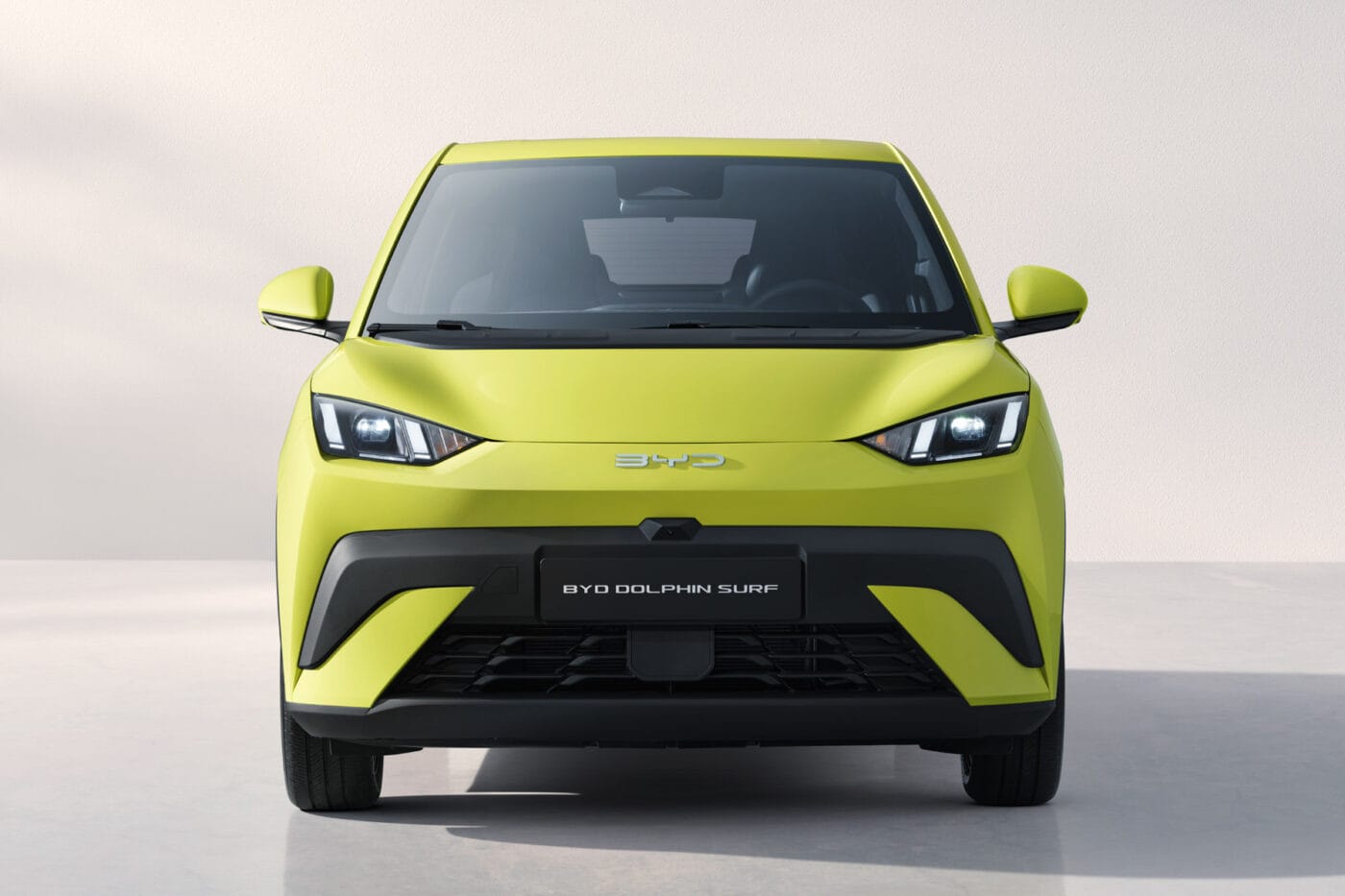
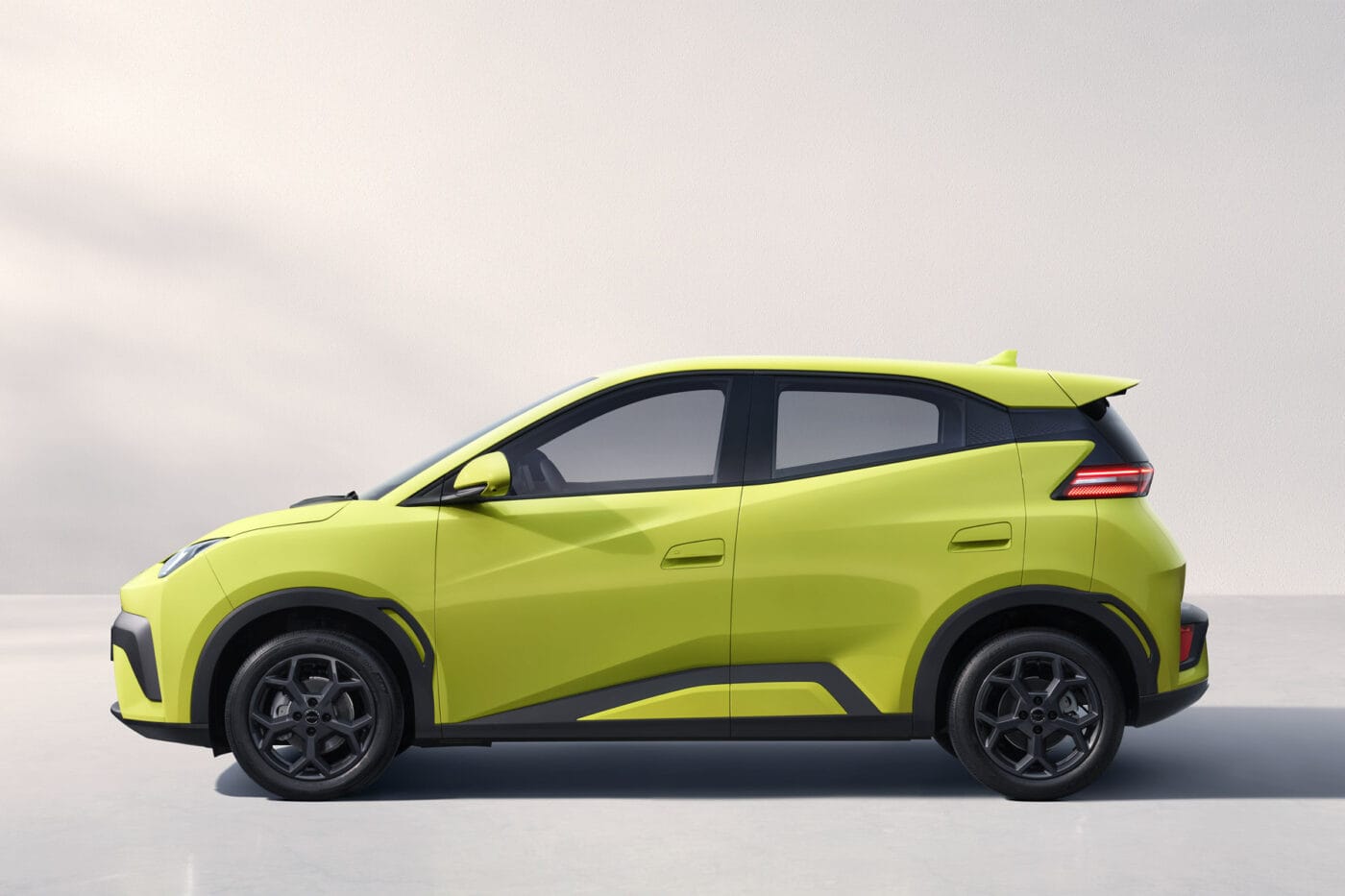
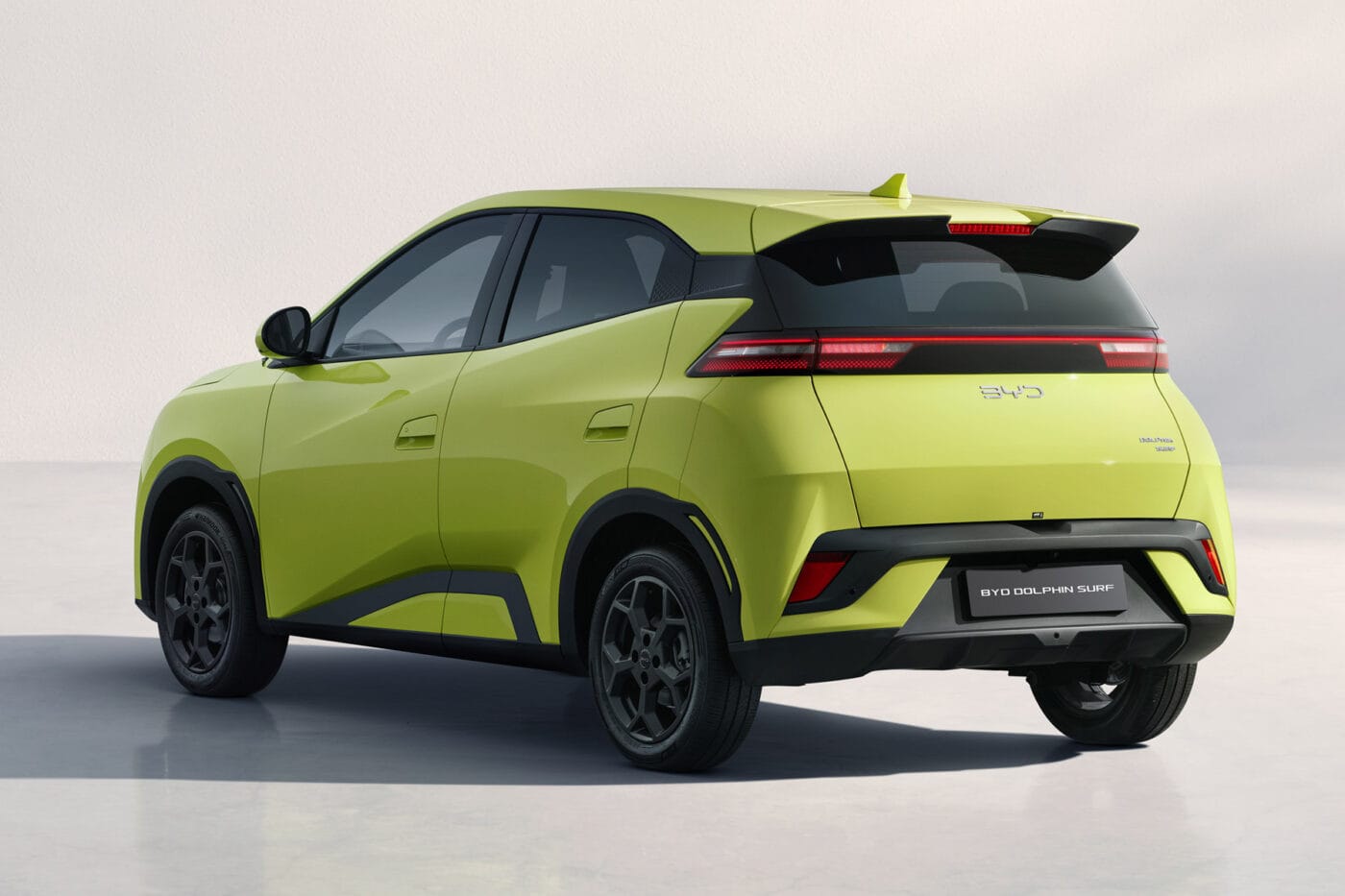
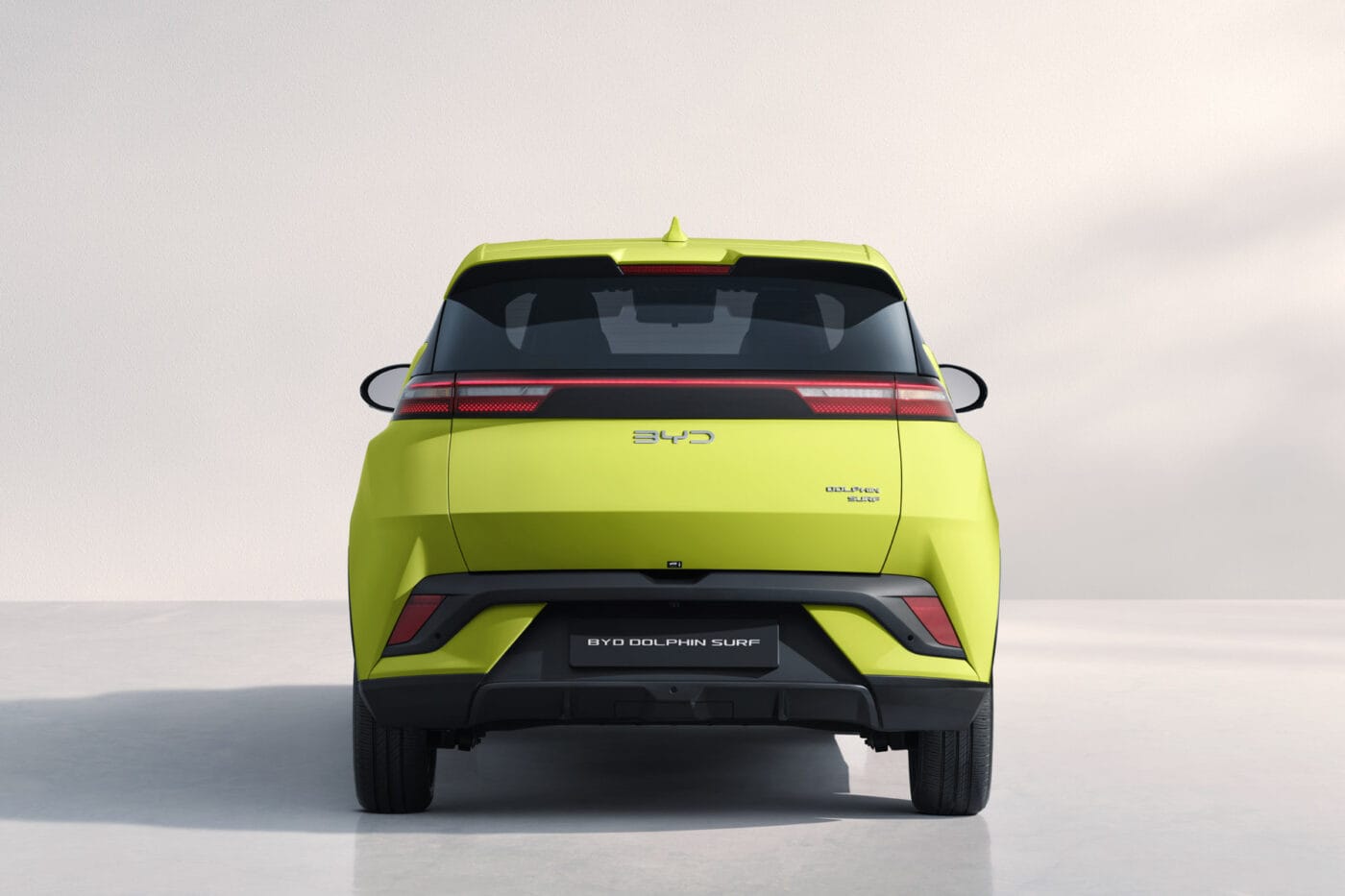
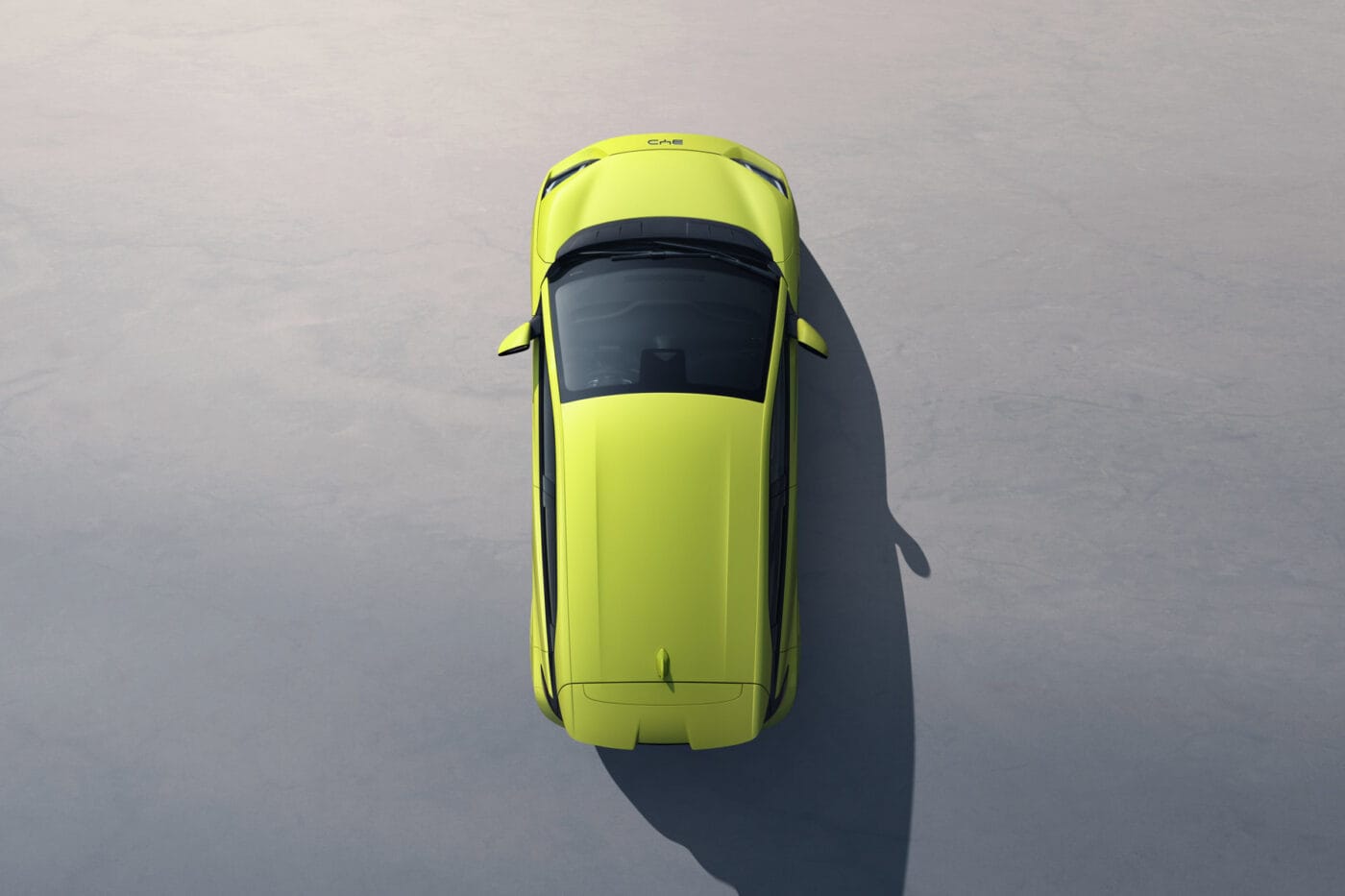
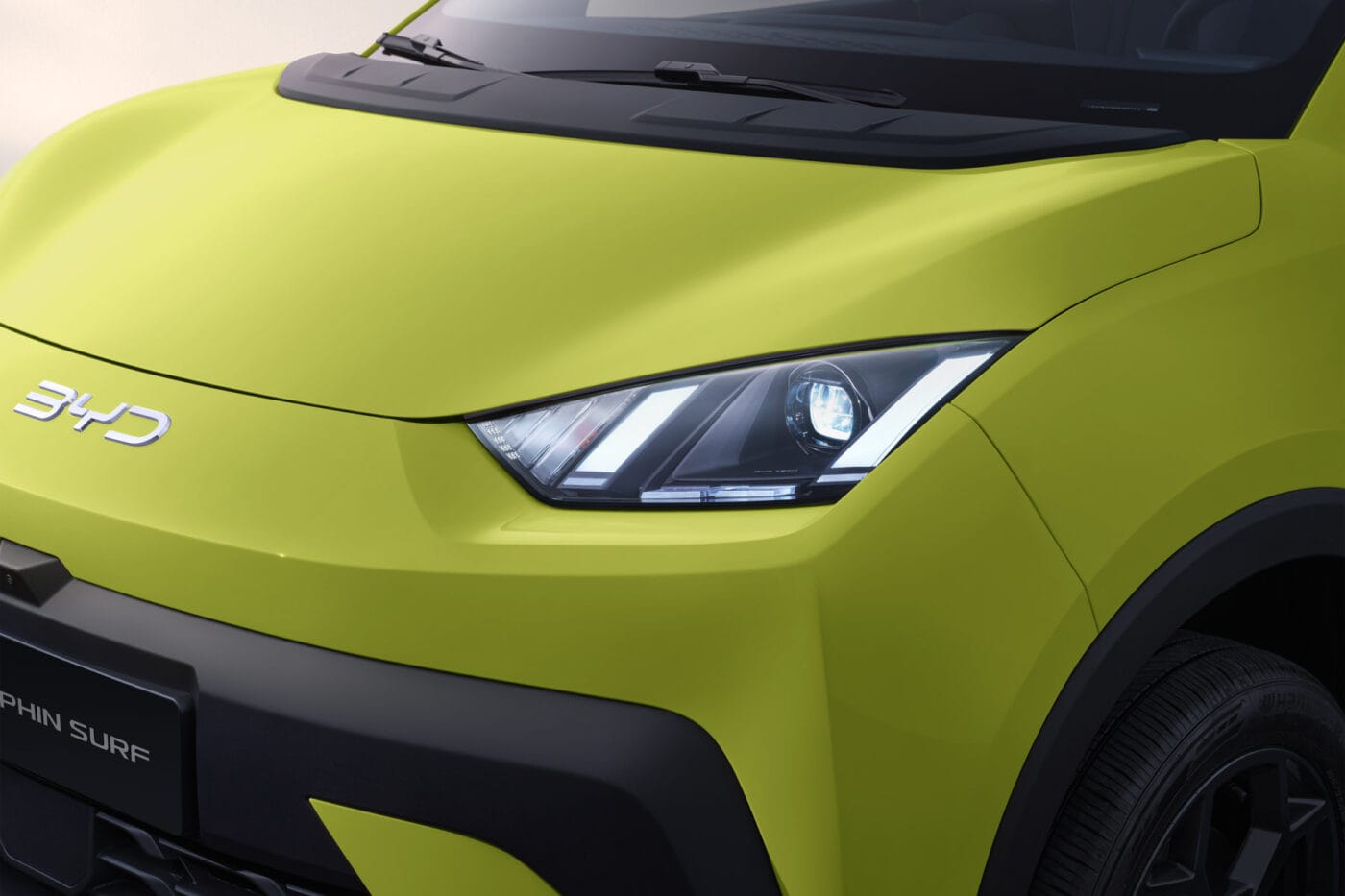
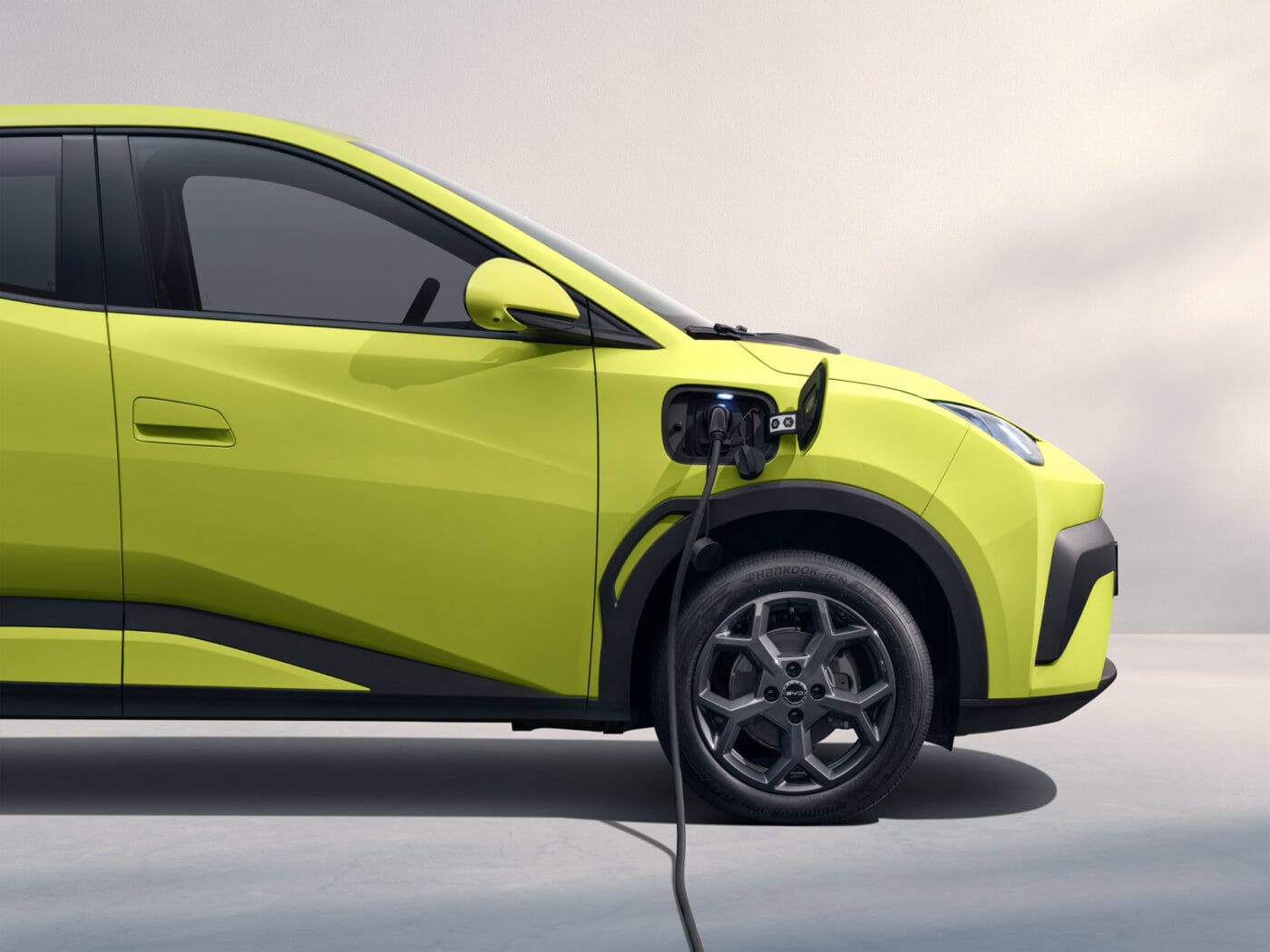
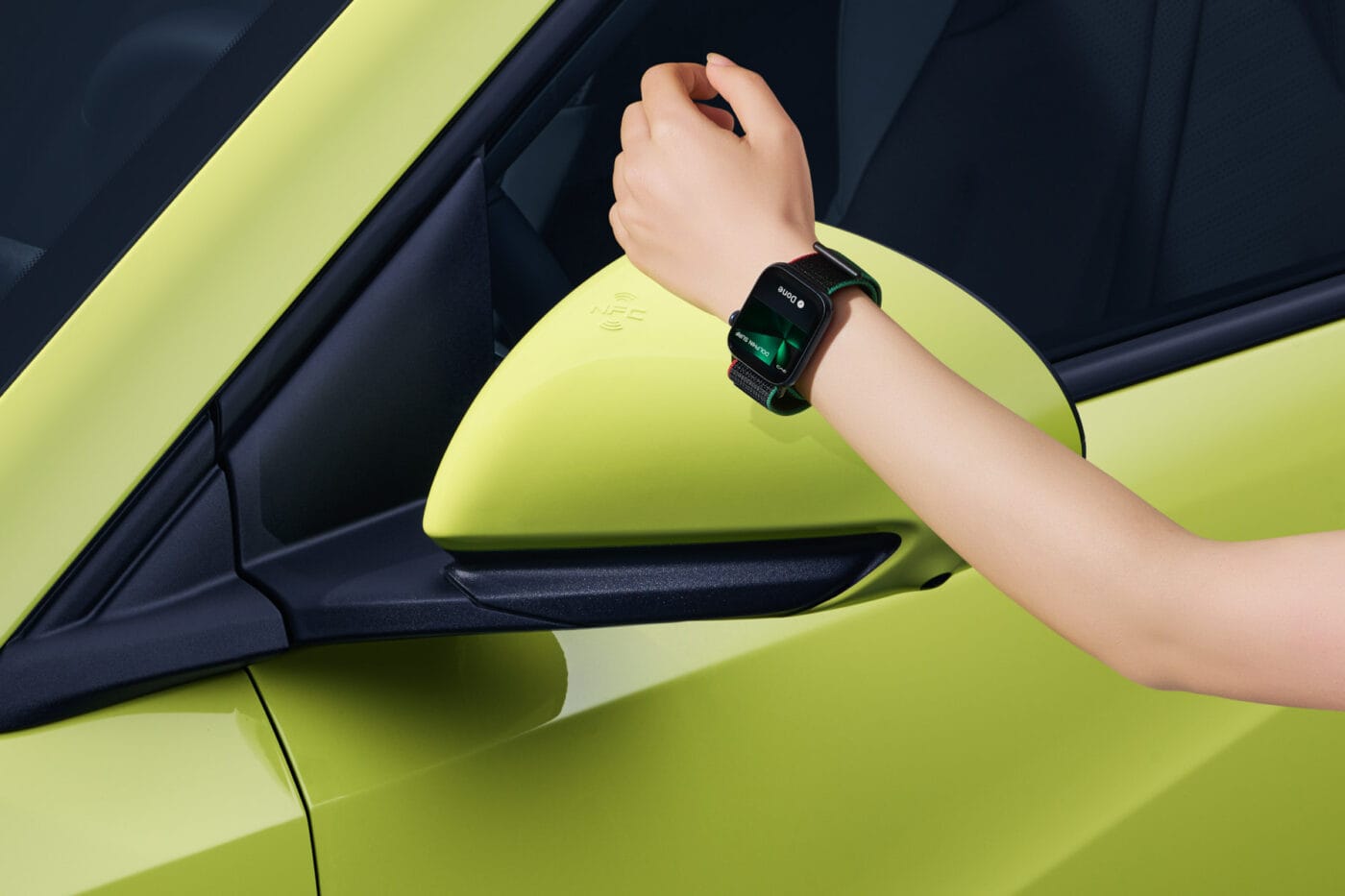
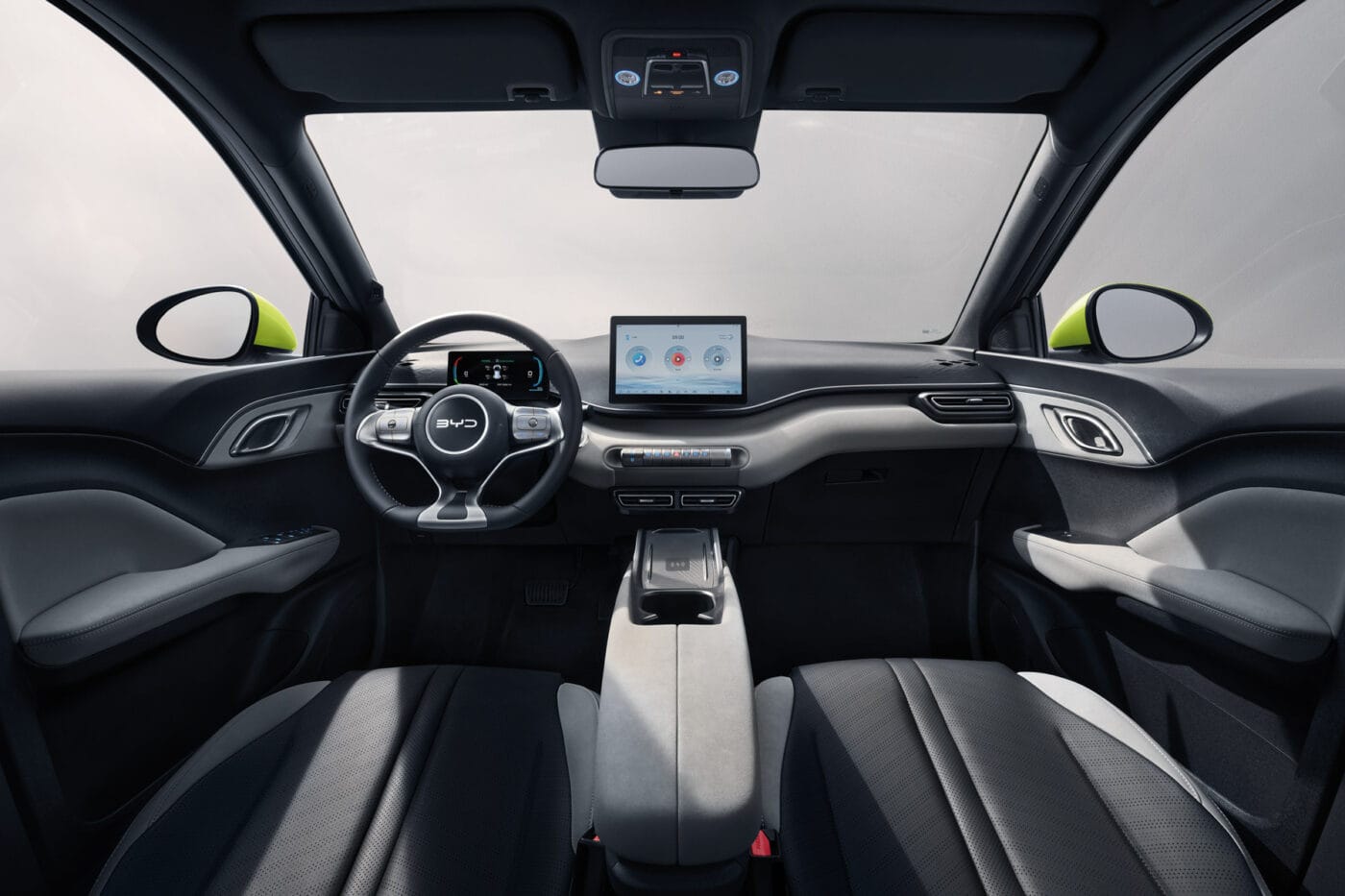
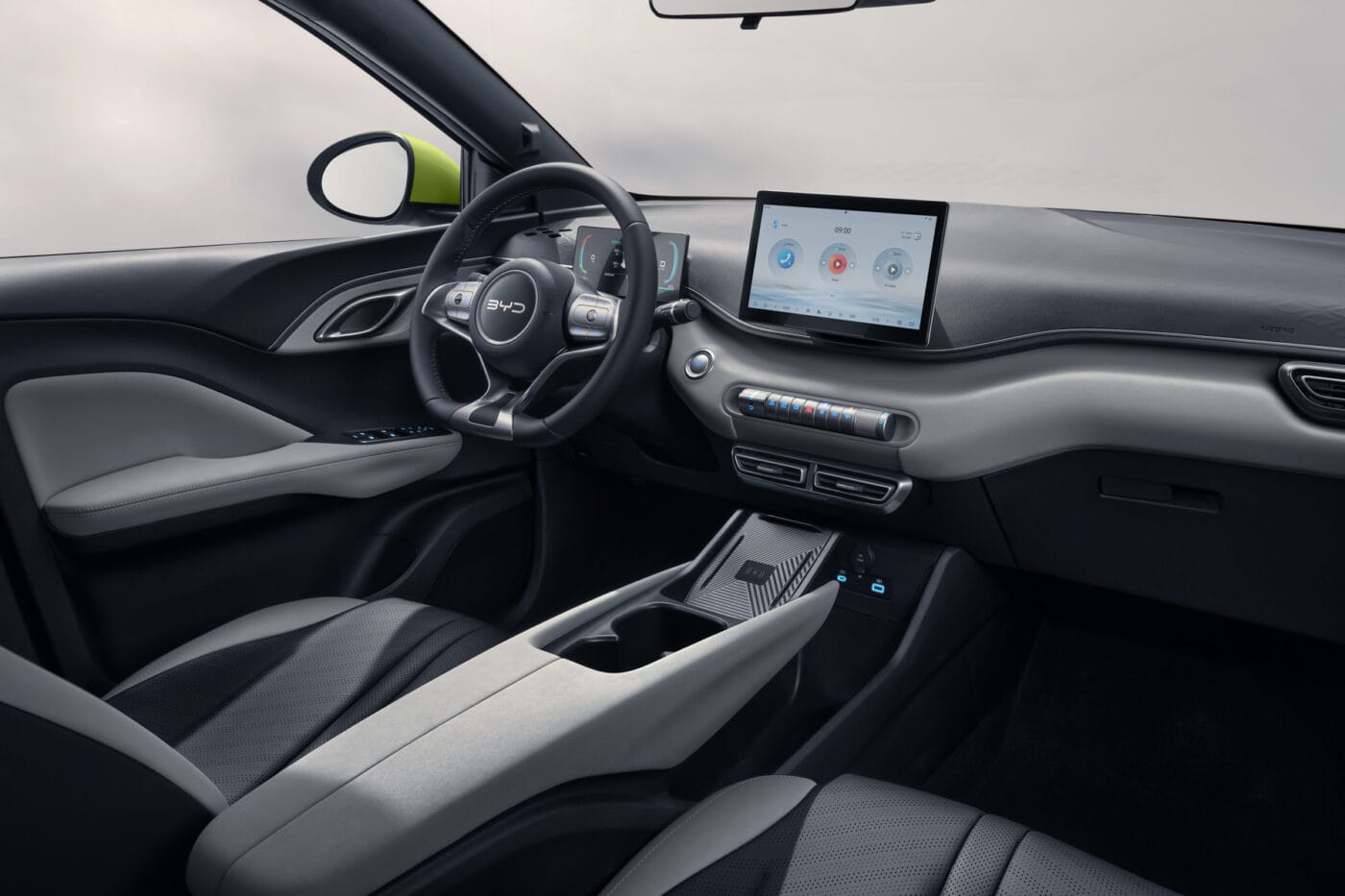
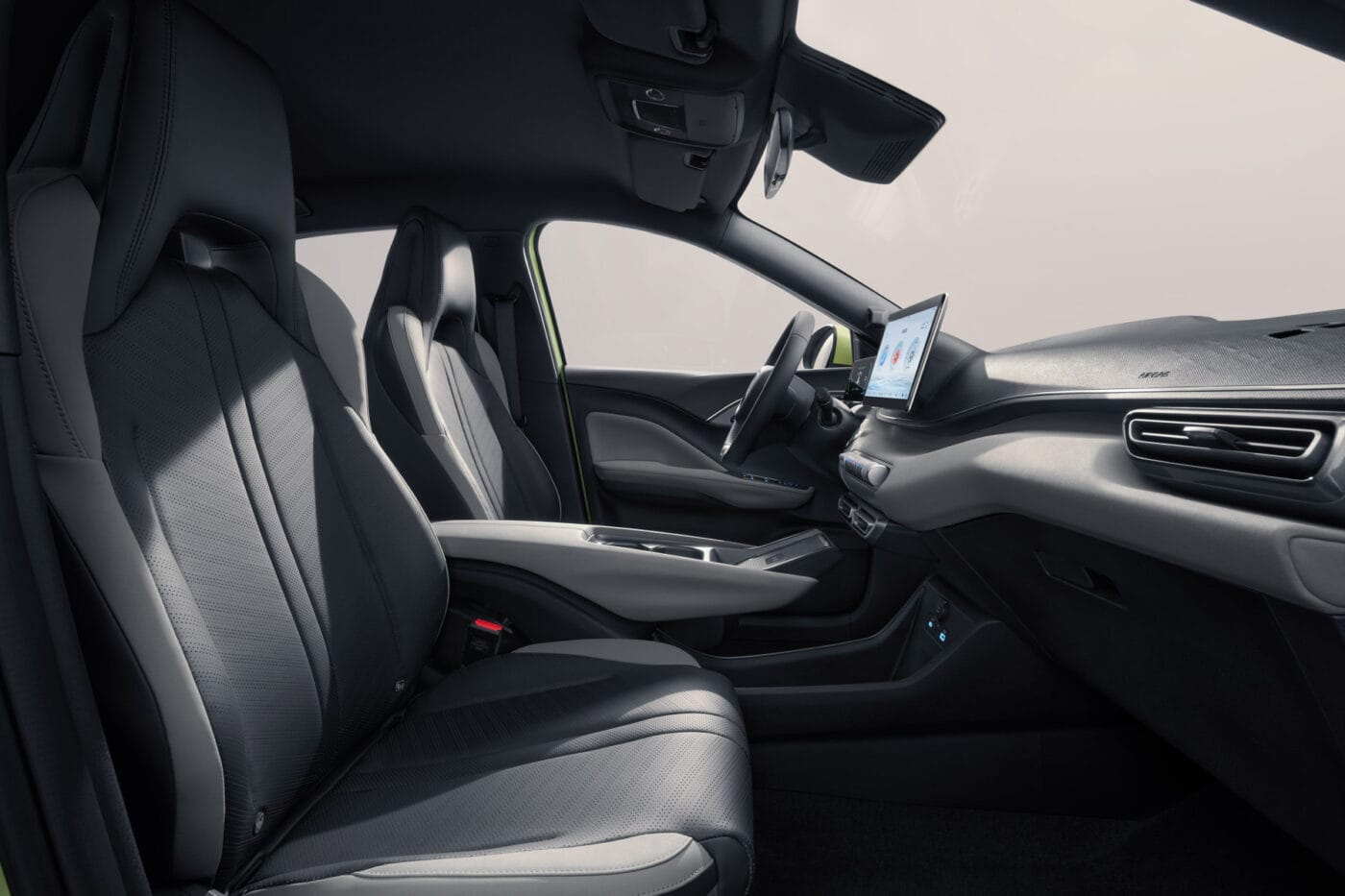
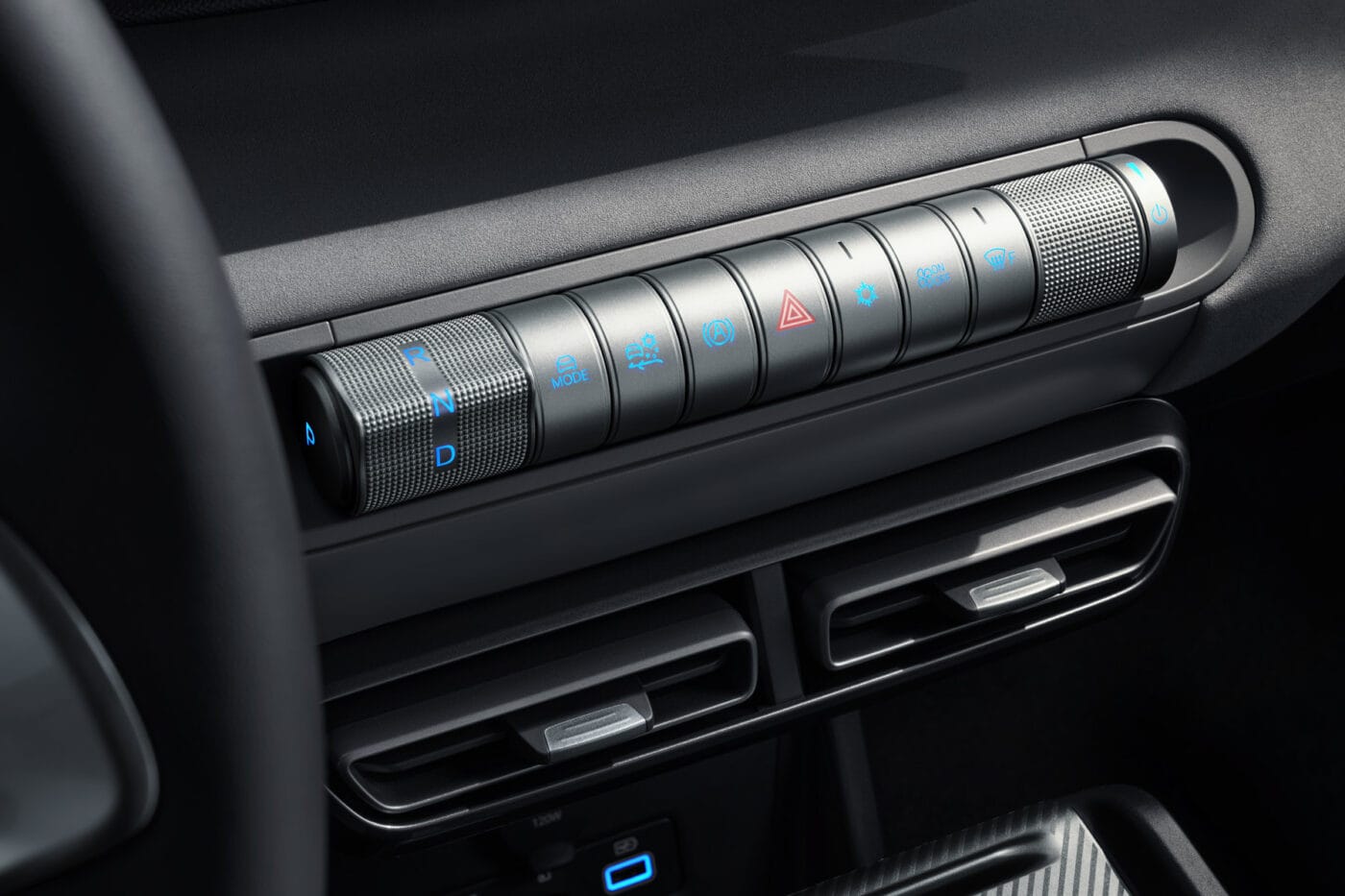
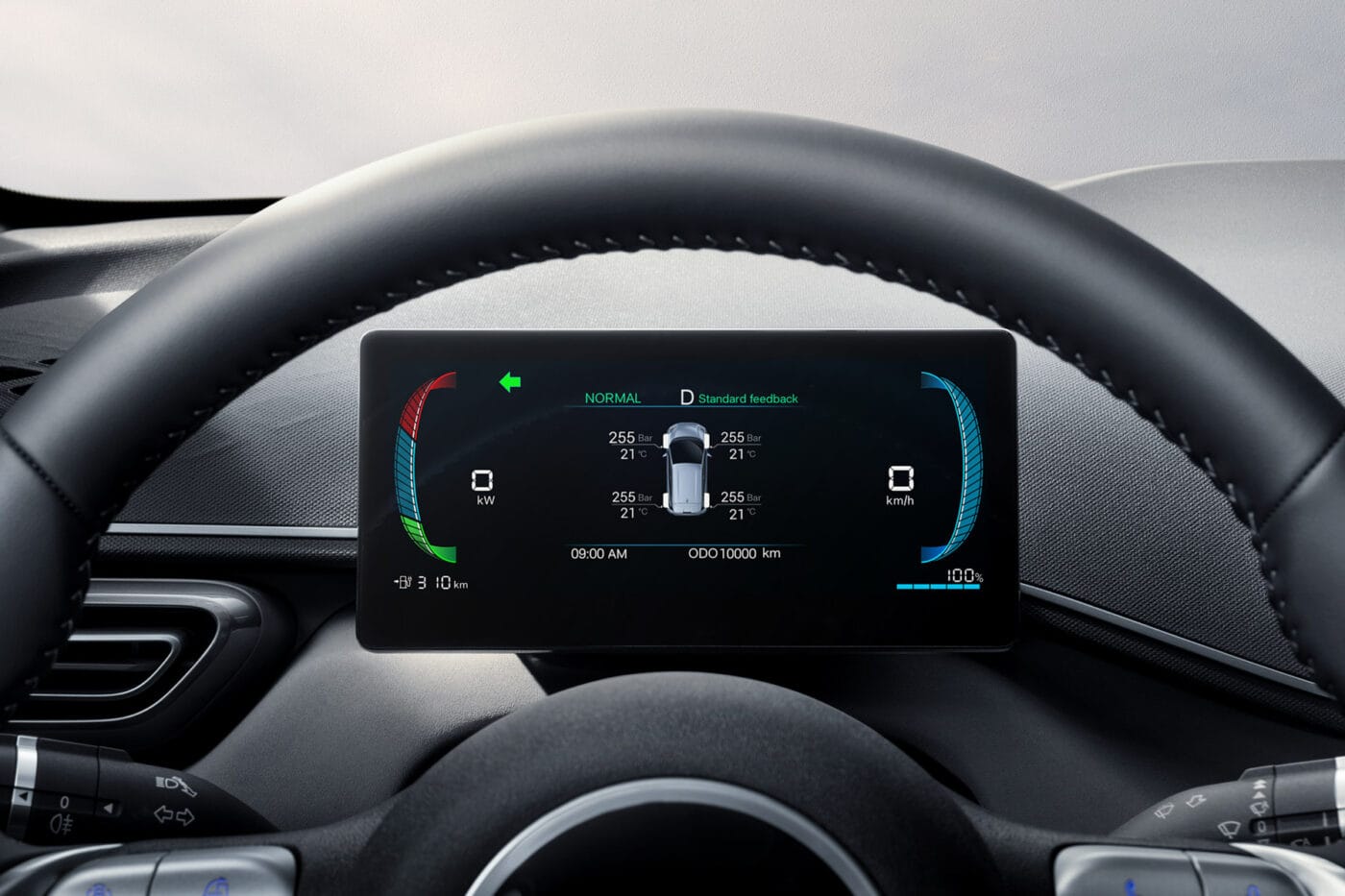
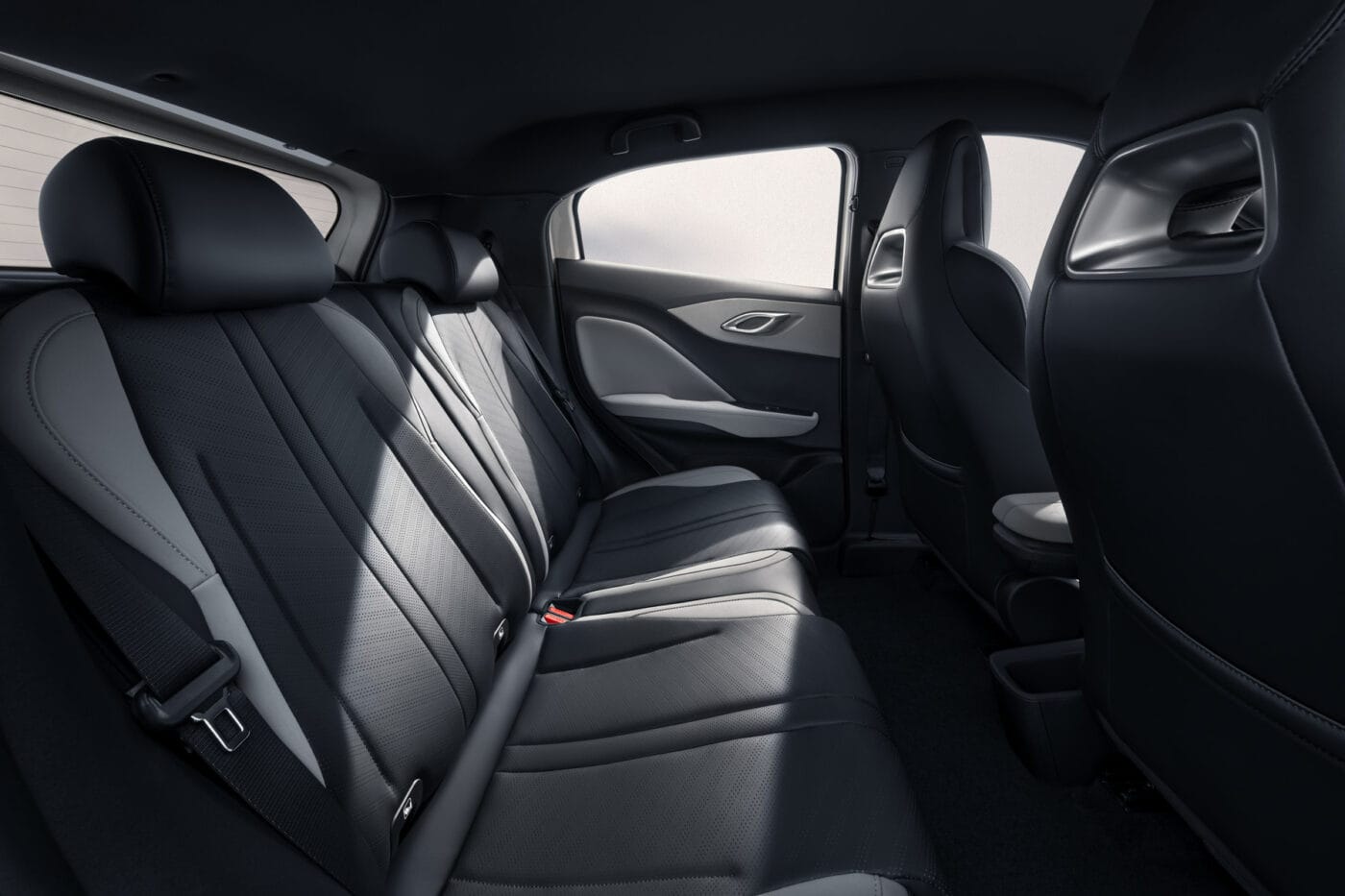
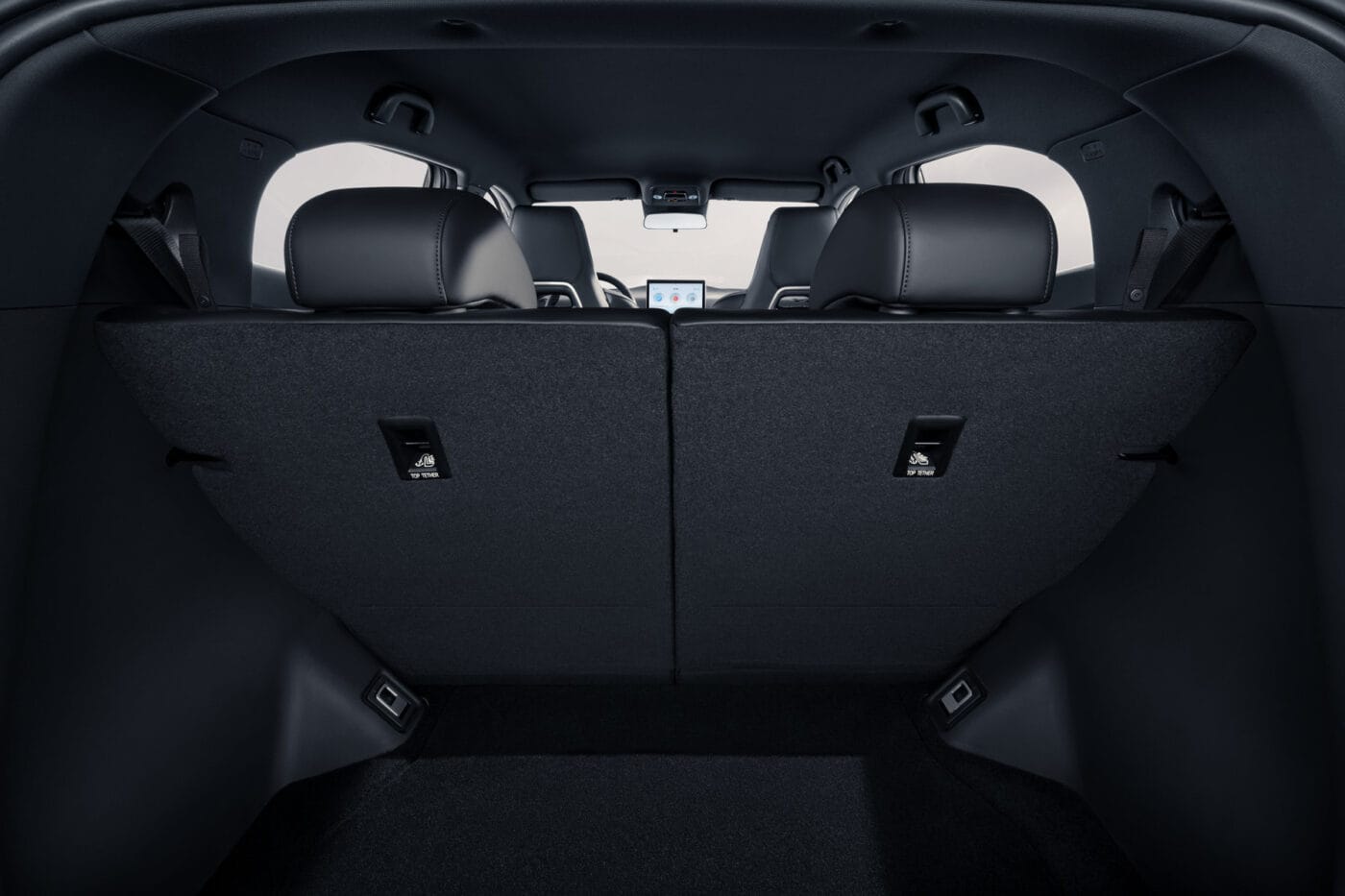
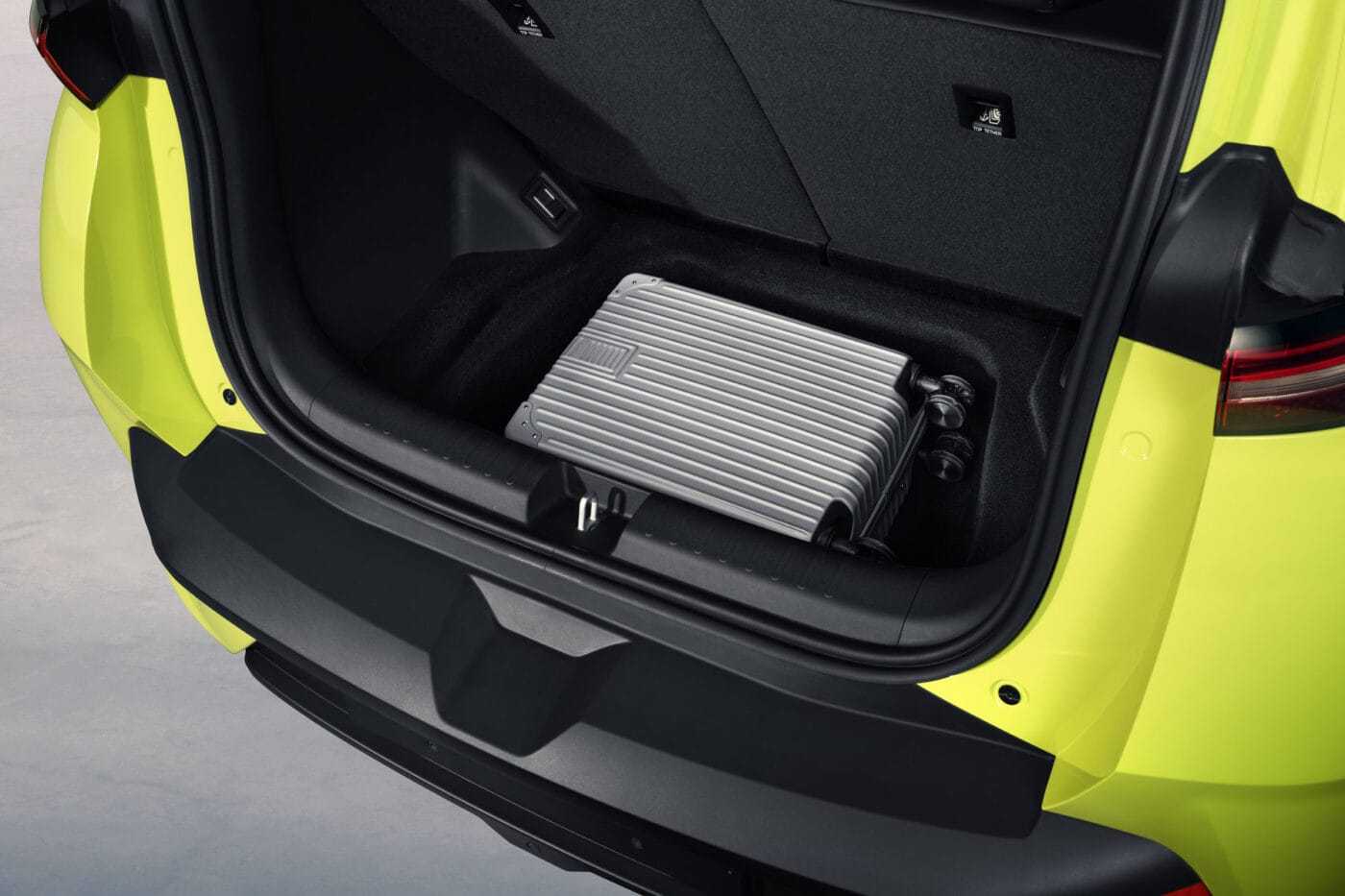
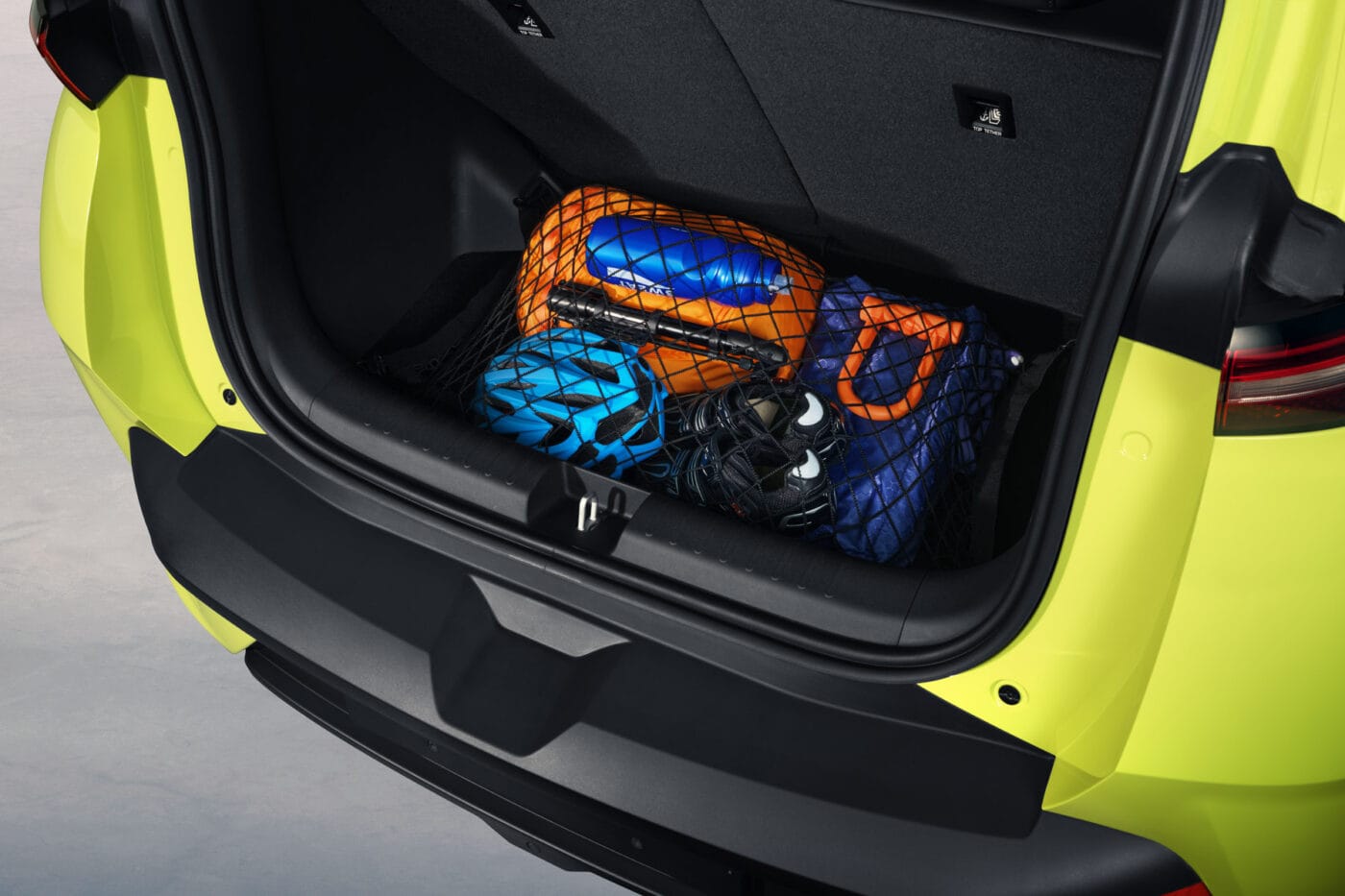
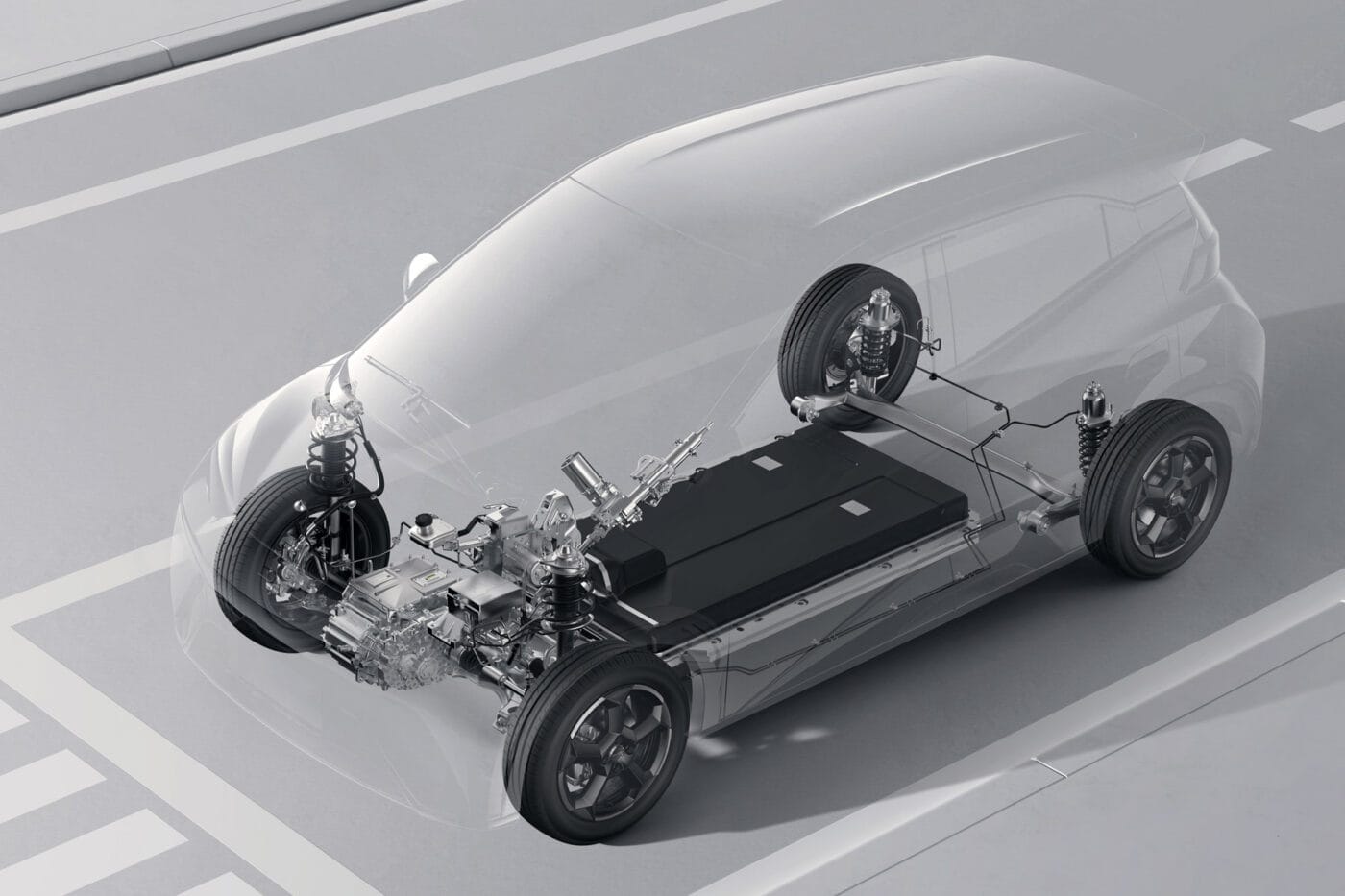
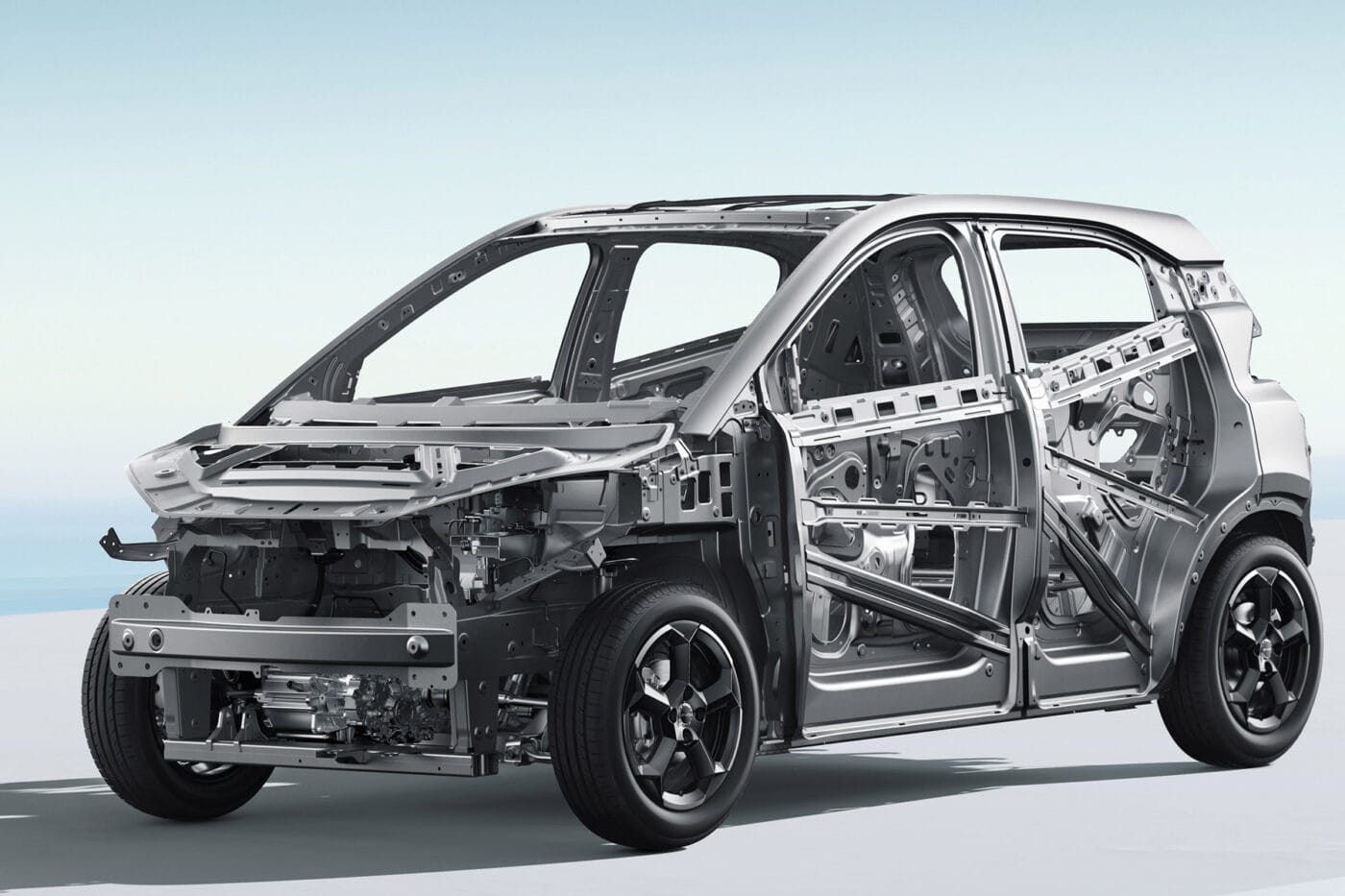
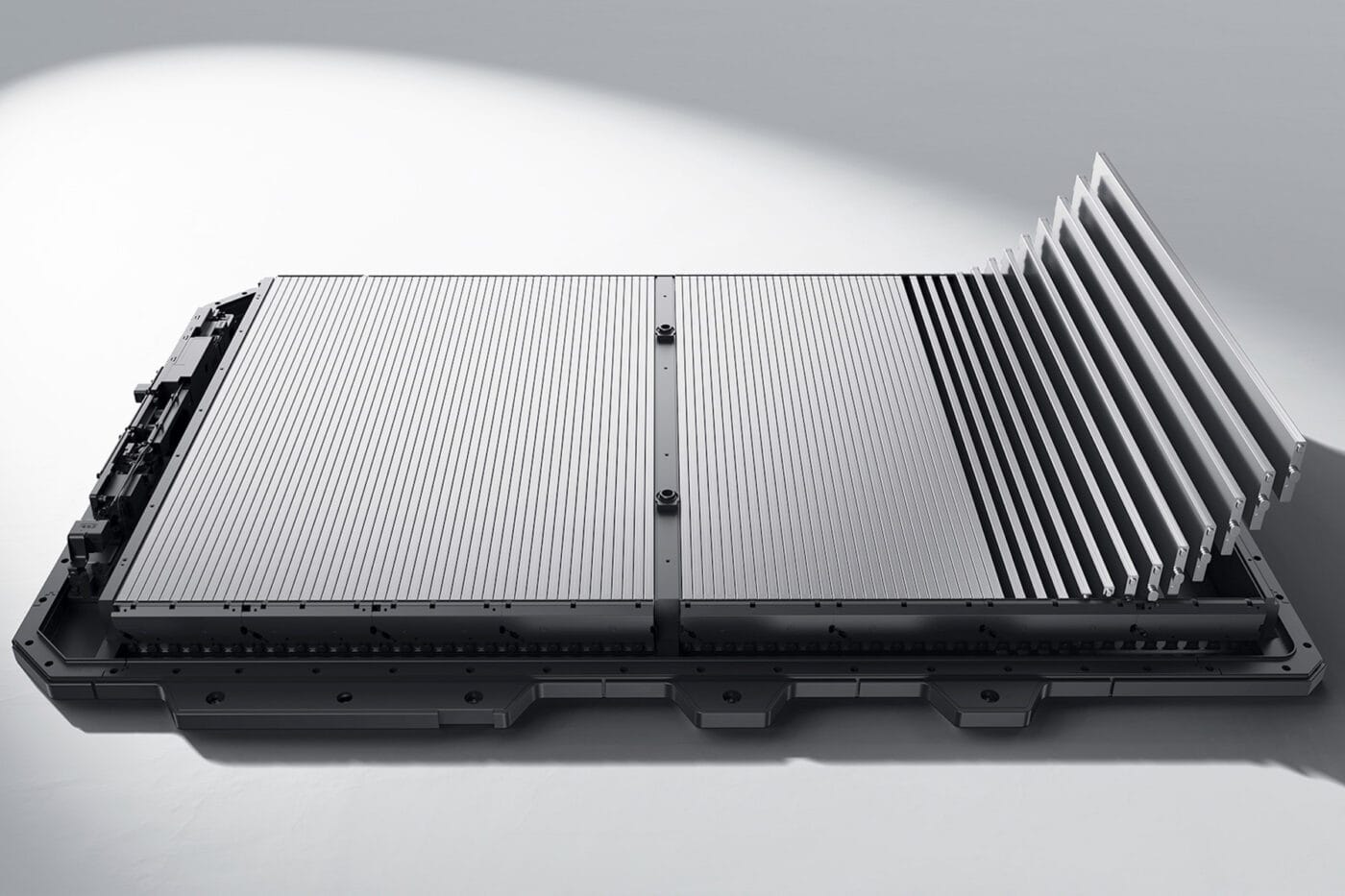
With a length of 3.99 metres, the Dolphin Surf is located exactly in the core of the small car segment of around four metres. The electric vehicle is 1.72 metres wide and 1.59 metres high, with a wheelbase of 2.50 metres according to BYD. For comparison: a Renault 5 is a few centimetres shorter and flatter, but slightly wider and also has four centimetres more wheelbase. The VW ID.2all study is slightly longer at 4.05 metres, almost ten centimetres wider than the BYD, but also slightly flatter. With the chosen dimensions, however, BYD is confident that the Dolphin Surf is ‘perfect for the narrow streets in the city with their small, narrow parking spaces’ precisely because of the narrower (and therefore slightly higher) body – and still offers a good amount of space in the interior.
The basis for this is the company’s own e-platform 3.0 – a purely electric platform on which larger European models such as the Dolphin and Seal are already based. The 4.30 metre long Dolphin compact car is related to the Dolphin Surf via the platform, but they are two different models. In China, a slightly shorter version of the Dolphin Surf is sold as the Seagull and is now one of the best-selling models on the Chinese market. The fact that BYD has largely adopted the design of the Seagull, but adapted the body and technology for Europe, shows the company’s growing understanding of the local market. Even if the similarity in name between the Dolphin and Dolphin Surf is sure to cause some confusion.
Two batteries, two drives, three versions
With the e-platform 3.0, it is clear that the BYD trademark blade battery is also used in the Dolphin Surf. This is a cell chemistry based on lithium-iron-phosphate (LFP), which, in comparison to NMC battery cells, does not require raw materials such as cobalt, nickel or manganese, some of which are critical. LFP cells are considered to be more robust, safer and cheaper than NMC cells, but have a lower energy density. However, disadvantages such as energy density at the cell level can be partially offset by some development approaches at the pack level. LFP batteries are now regarded as the technology of the future in volume models because their cost advantage outweighs their disadvantages.
BYD’s aim with the Dolphin Surf was not to outdo the competition with top values for the quartet of cars, but rather to align the ‘battery capacity with the driving needs of many urban drivers’, as the press release states. In the Dolphin Surf, BYD offers two battery sizes and two power levels, which are combined into three different model variants. The Dolphin Surf Active has a 30-kWh battery that has been certified with a 65-kW drive with a WLTP range of 220 kilometres. The Boost version also uses the 65 kW motor, but together with a 43.2 kWh battery for a range of up to 322 kilometres. The Dolphin Surf Comfort also uses the large battery, but in combination with a 115 kW front-wheel drive – this version achieves a WLTP range of 310 kilometres. You can find an overview of all the important data in the following table:
| Dolphin Surf Active | Dolphin Surf Boost | Dolphin Surf Comfort | |
|---|---|---|---|
| Drive | FWD | FWD | FWD |
| Power | 65 kW | 65 kW | 115 kW |
| Torque | 175 Nm | 175 Nm | 220 Nm |
| Acceleration | 11,1 s | 12,1 s | 9,1 s |
| Top speed | 150 kph | 150 kph | 150 kph |
| WLTP range | 220 km | 322 km | 310 km |
| Battery capacity | 30 kWh | 43,2 kWh | 43,2 kWh |
| Charging capacity DC | 65 kW | 85 kW | 85 kW |
| Charging time DC 10-80% | 30 min | 30 min | 30 min |
| Price (in Germany) | 22,990 Euro | 26,990 Euro | 30,990 Euro |
With the focus on the city, BYD emphasises that the range in the WLTP city cycle is up to 507 kilometres. Only the test drives will show how efficient the Dolphin Surf really is. 500 kilometres is likely to be very sporty, but with city consumption of between 12 and 13 kWh/100 km, a real 200 to 300 kilometres could be possible depending on the battery size. Incidentally, the motors are also a BYD in-house development; the 8-in-1 electric drive combines the drive motor, transmission, vehicle control unit (VCU), DC converter, battery management controller, motor controller, power distribution unit and on-board charger into a single module.
The AC on-board charger delivers 11 kW, regardless of the variant. There is also a vehicle-to-load function, thanks to which electrical devices with an output of up to 3.3 kW can be supplied with power from the traction battery. DC charging depends on the battery: The 30 kWh battery can be charged with a maximum of 65 kW, the 43.2 kWh battery with a peak of 85 kW. In both cases, the standard charging process from ten to 80 per cent should take 30 minutes – this is rather average and one of the few points where it becomes clear that the BYD Dolphin Surf is an electric car for thrifty drivers. From 30 to 80 per cent, the DC charging process with the large battery should take 22 minutes.
In terms of safety, however, BYD makes no compromises: over two thirds of the body is made of high-strength steel and numerous assistance systems are on board as standard – including adaptive cruise control, lane departure warning, emergency braking and high beam assist. A reversing camera, parking sensors, several airbags and a tyre pressure monitoring system are also part of the standard equipment. Depending on the equipment variant, further features are added, such as electrically adjustable seats, rain sensor, LED headlights, 360-degree camera or wireless smartphone charging. All versions have three ISOFIX points for child seats, which should make the Dolphin Surf particularly family-friendly.
BYD also wants to score points with the space layout of the pure electric platform, although the competition is also increasingly focusing on pure electric cars rather than multi-energy vehicles for cost-optimised small electric cars. With a wheelbase of 2.50 metres, there should be enough space for four occupants, while the boot has a capacity of 308 litres. If the rear seats are not in use, the small car can even offer 1,037 litres of storage space with the backrests folded down. And as the Dolphin Surf has a space-saving twist beam axle at the rear, there is even another large storage compartment under the boot, where a travel bag, for example, can be stowed.
In the interior, all versions of the vehicle have the BYD-typical, rotating 10.1-inch touchscreen “with the latest user interface,” as the manufacturer wrote. This includes the permanent shortcut bar and the three-finger gesture control for the air conditioning system. Android smartphones and iPhones can be connected to the system wirelessly.
Promotional prices start at 19,990 euros
The Dolphin Surf can now be ordered in Germany, with BYD itself expecting the first deliveries from June. For the market launch, BYD is offering the Dolphin Surf directly at promotional prices: Until 30 June 2025, the Active version will start at 19,990 euros, after which the regular price will be 22,990 euros. The promotional price makes the Dolphin Surf look particularly well-priced. For the regular price of around 23,000 euros, there is almost a Hyundai Inster – which already has a significantly larger battery with 42 kWh for more range in the base version.
The Dolphin Surf Boost is initially available from 22,490 euros, later from 26,990 euros. The Comfort version has the highest promotional discount: Until the end of June, the top model is available from 24,990 euros, and from July onwards it will be a whopping 30,990 euros on the list. Here, too, the promotional prices appear to be quite competitive – but with the regular price of just under 31,000 euros, the Dolphin Surf is already at the level of the size class above – with the ‘real’ Dolphin and the ID.3. However, BYD sees itself as having an advantage over the competition, even when adjusted for equipment, as the Dolphin Surf offers features such as voice control, 360-degree camera, V2L, opening via NFC device and vegan leather seats (i.e. artificial leather) – some of which are not even available from the competition for an extra charge.
The coming weeks and months will show whether BYD can score points with German and European customers. For consumers, however, the premiere itself is positive, as competition stimulates business. For the manufacturers, it is clear that they will not be able to rest on their laurels or their dense sales and service network for much longer. “We are now making electromobility affordable,” said BYD manager Schulz in Berlin. “And we’re also making it cool!”

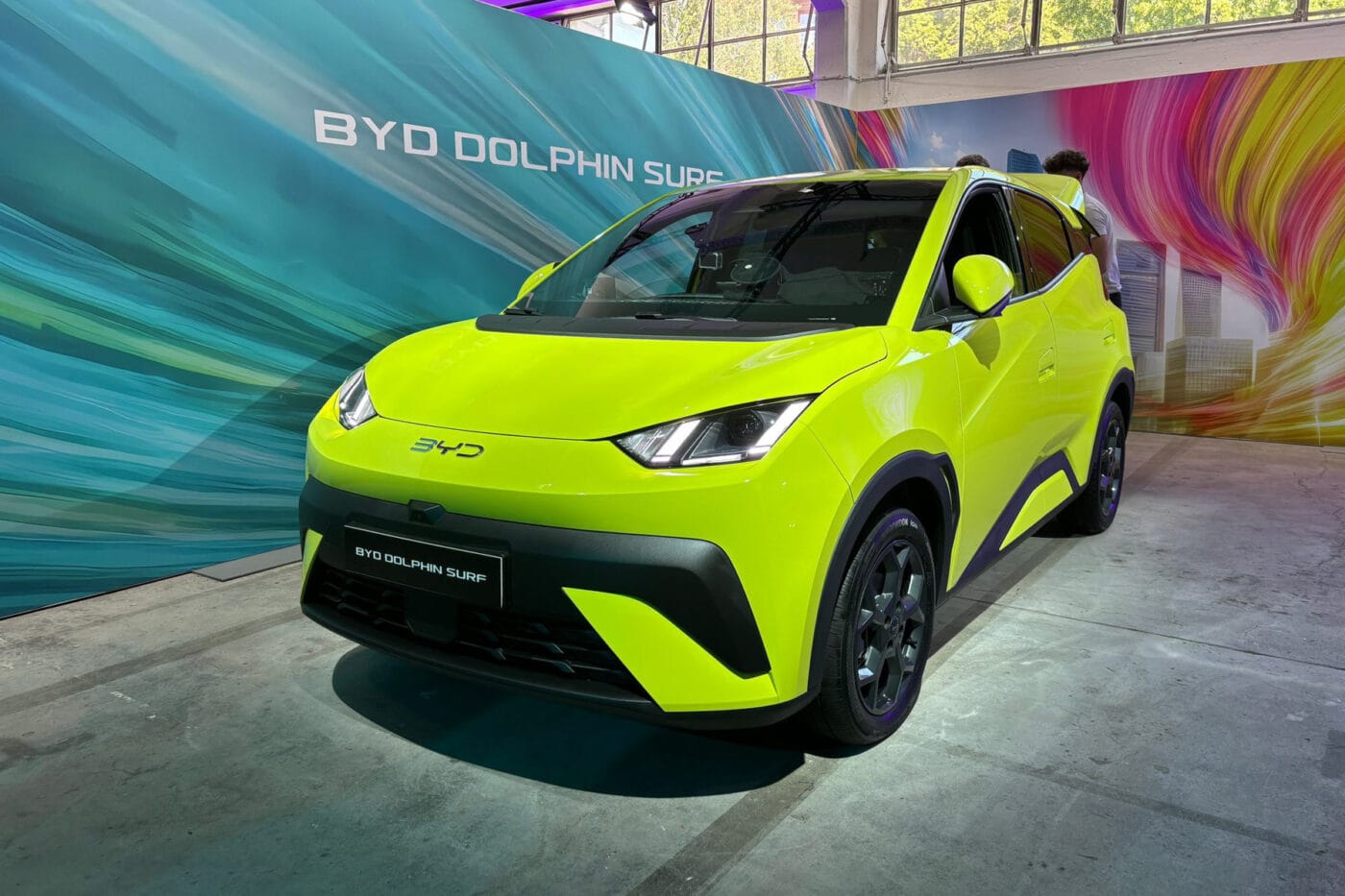
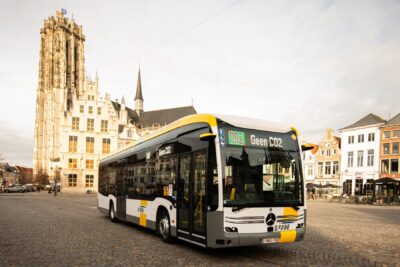
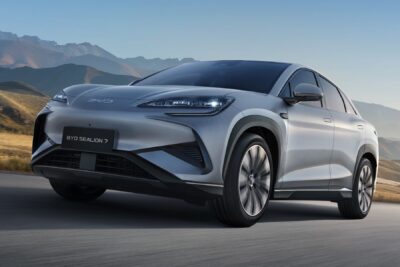
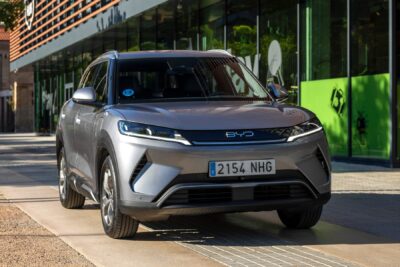
0 Comments